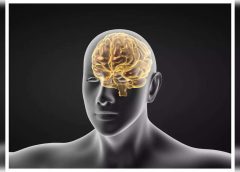
Brain aneurysms in India are fatal: “They are among the most common cases we see in our Emergency department”
[ad_1]
Statistics are in fact worse in India. In a report published in Neurology India publication, titled ‘Need for brain aneurysm treatment registry of India: How effectively are we treating intracranial aneurysms in India?’ Sudheer Ambekar, who is also a fellow at the University of Miami, said that about 40% of aneurysms in India are fatal. He insisted on a dire need for a multilevel approach, where there is a national registry to identify and treat cerebral aneurysm cases effectively.
It’s common and fatal for many
According to Dr Gaurav Goel, Director and head – Neuro interventional surgery, Institute of neurosciences, Medanta hospital, “It is such a common disease that we typically say every 1 in 100 people will have it. Aneurysm is like a swelling in the blood vessel, which forms a balloon or bubble, which eventually bursts and causes brain bleeding.”
“We see aneurysms day in and day out. These are among the most common conditions I see. When these aneurysms burst, 1/3rd people just collapse and die. It may happen when they are having tea, reading the newspaper or even in their sleep. 1/3rd patients who are able to reach hospital but they are in coma, paralysed or on a ventilator. Only 1/3rd are in a condition where they can talk about their treatment. But it’s very common in our emergency department. This sudden death is a common feature of brain aneurysm,” he adds.
The need to spread awareness in India
It’s only in India that people don’t pay attention to it. “If you look at the Indian health check up systems, it is predominantly designed around blood tests and to a large extent around cardiac diseases. But from a brain point of view, we just do a carotene doppler which is a screening of the neck vessels which will not show if a person has aneurysms. So the way to detect those aneurysms is through an MRI or MRI angiography, which is a non-invasive thing, absolutely safe but is slightly expensive. The pattern has changed so much that 20-30 years back, our western colleagues in Europe, US, used to see many ruptured brain aneurysm but today they rarely see brain aneurysm cases. It is because most are preemptively diagnosed on MRI. In our practice, we see 80% of ruptured aneurysms and only 20% who get diagnosed through screening. We haven’t been able to create that sort of awareness in our Indian population.”
Signs and symptoms
Most of the time these aneurysm are asymptomatic. Like you and I can be harboring an aneurysm and we may never come to know about it, unless it starts to grow and start to push one particular side of the brain. Large aneurysm will give symptoms, like pain behind the eye, double vision, or speech gets affected, coordination gets affected and you get headaches. Headaches is some sort of a warning that body gives to you. If someone is having persistent headaches, it may be migraine but if you start screening all the patients with headache, you will be surprised to see how many aneurysm can be diagnosed at a preemptive stage.
Some of the common signs of brain aneurysm are sudden severe headaches, nausea, stiffness in neck, blurred vision, sensitivity to light, pain behind the eye, loss of consciousness, confusion. Unruptured brain aneurysms have no symptoms
India reports somewhere around 76,500 to 204,100 new cases every year. Timely screening can prevent many casualties.
[ad_2]
Source link

